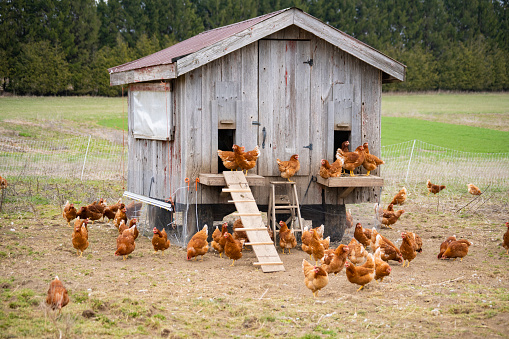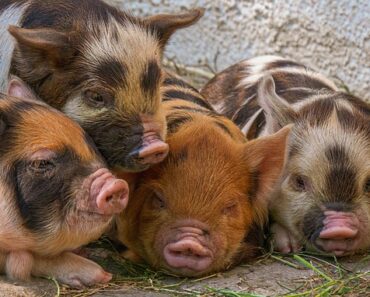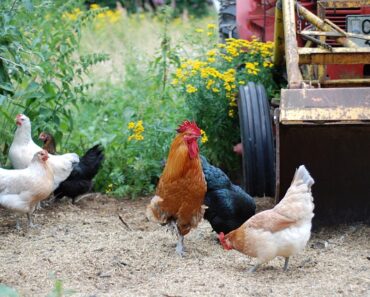
The making, installation and use of a henhouse are of course regulated in France. It is therefore important, before embarking on any project, to have a general view of the current state of legislation, in order to know the limits and obligations incumbent on the owners of chicken houses. You will then be able to comply directly, without committing the slightest mistake that could be detrimental to you.
Legal foreword
Before embarking on your chicken coop project, first make sure that no municipal by-law has been passed by your municipality that could possibly restrict the installation of chicken coops in your garden. Once you have determined that you can install your chicken coop in your garden, the next step is to find out which chicken coop you can install.
From a legal point of view, there are three different types of chicken houses, requiring various authorizations. For the smallest ones, with a population of less than 10 individuals, there are no particular rules as this installation is assimilated to pets, and therefore does not require any particular authorization. The second category concerns backyard installations. These installations do not require the individual to be a farmer or to have declared himself at the town hall, provided that his population is a maximum of 50 hens over 30 days old, thus reserving the backyard product for family consumption. The last category – which cannot be placed at the bottom of the garden – concerns the rearing of hens, in facilities with more than 50 hens over 30 days old. This last category depends on specific regulations and is reserved for professionals.
From the point of view of noise pollution, the legal texts remain relatively clear. The legislator considers that the noise emitted by gallinaceous birds is a normal nuisance in the countryside. However, it must be considered that incessant or even disturbing noise cannot be recognized as normal nuisance and would in fact engage the civil liability of the owners of these animals. For greater comfort both in terms of health and the tranquility of the neighborhood, the law stipulates that backyard installations must be placed at least 25 meters from the first dwelling. As far as livestock farms are concerned, they must be at least 50 meters away, but obviously cannot be placed in the garden of private individuals. For small installations of less than 10 animals, there is no minimum distance, although for the good of all, think of moving them as far away from the houses as possible.
The last point you will need to pay attention to is the maintenance of your facility, and more specifically, what you will do with the manure from your gallinaceous animals. In all cases, and for obvious public health reasons, but also for the comfort of the neighbourhood, the manure pile should be at least 35 metres from any dwelling, a water source or the public highway.
If you do not respect these few recommendations, you could be held responsible by one of your neighbors who would be inconvenienced by your new population. Indeed, not everyone appreciates being closer to nature!
A henhouse… What is it?
The henhouse is the life link of hens and other farmyard animals. The henhouse is often broken down into two distinct parts which are the living and the sleeping parts. The living parts are most regularly those located outside, surrounded by a fence in order to avoid possible escapes of your charming animals. It is not always necessary for the henhouse to have a screened “roof”, as hens do not fly (this is the case here with the hens). The night part is the covered part of your henhouse, which contains the incubators on which your hens will sleep, but also lay their eggs. This part must be sheltered from the wind, from the cold but also from too much heat and necessarily have a water point.
There are of course various henhouses, adapted to the expectations of each one, but especially to the needs of each one.
Chicken houses for the general public
These henhouses are growing more and more, both in peri-urban or urban areas and in more rural areas. This means that they have significant advantages that allow them to conquer a large public. These henhouses are most often sold in kit form, to be assembled by yourself and placed wherever you wish. However, there are some that can be transported without being dismantled, but these models are rare and are generally relatively small, therefore suitable for a small population.
Pre-fabricated chicken houses feature choice materials and interesting new cuts designed by engineers in search of the product that will delight you. The main advantage is that you take away almost a finished product since you only have to assemble and install it, without any further work on your part, which presents for many consumers – not necessarily DIY enthusiasts – an advantage of choice, requiring no special skills.
Where to place your chicken house?
As discussed above, it always seems wise to place the chicken house relatively far from the house, and the back of the garden seems to be an ideal location. Indeed, you will be able, by moving your animals a little farther away, to guarantee you a quiet neighborhood, your neighbors not being disturbed by your animals.
We therefore advise you to place your henhouse at least 30 meters away from your neighbors’ homes, but also from your own so as not to be disturbed by odors.
As far as the location is concerned, make sure that your henhouse is not constantly in full sun, to avoid excessive temperatures during the summer. Preferably place your henhouse under a tree, or even place the tree in the center of the henhouse.
If you have a few ducks, it might be a good idea to create a small pond about 30 centimeters deep for them. Place your henhouse in such a way that your work does not interfere with your garden.
Chickens… What behavior?
What can be the behavior of these small gallinaceous, so widespread throughout our countryside? This question is certainly simple, but the answer will prove to be somewhat more expansive.
In spite of the most numerous crossbreeds that the hen has undergone over the centuries, which have increased its productivity in terms of eggs, it has remained true to itself, both in its character and its behavior. The hen has always been a gregarious and relatively sociable animal living in extremely hierarchical groups, leaving no room for the unexpected.
The hen has also remained, in spite of its domestication, a relatively fearful animal in certain aspects, and mainly if it has not been accustomed from a very young age to be in contact with humans. However, it is fearful of other things, such as predators for example, from which it will constantly seek to distance itself, or will try to flee in the face of the most certain and immediate dangers.
This barnyard animal is very skillful in managing its external relations and will not be disturbed by the presence in its enclosure of other feathered animals such as ducks or geese, with whom it will cohabitate very well.
For a better life in society, please make sure that your birds are never short of food, and especially water. This will guarantee you the best results, but also the best eggs laying, up to one egg per day for the most productive ones, and one egg every two days for the less productive ones.






